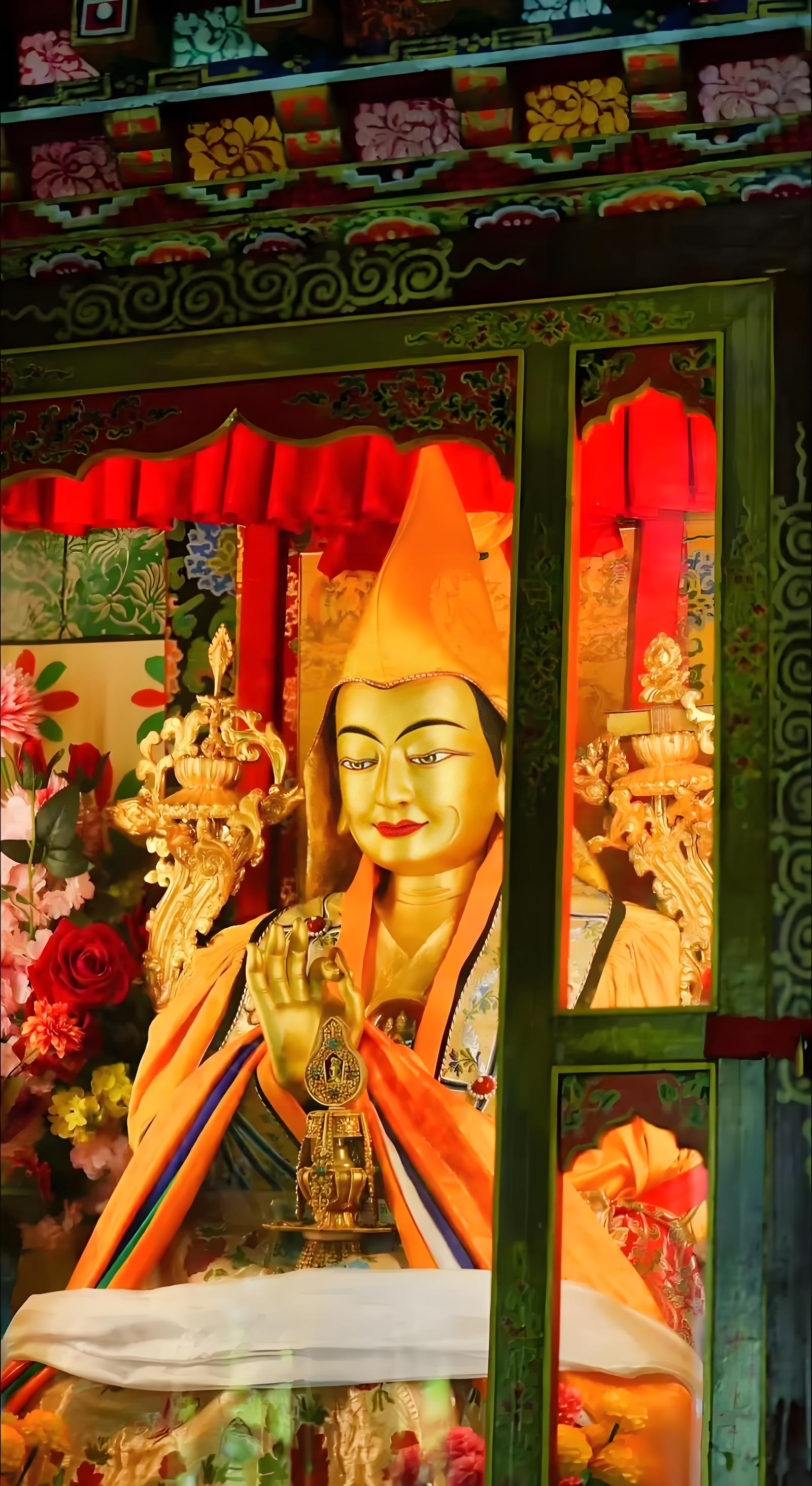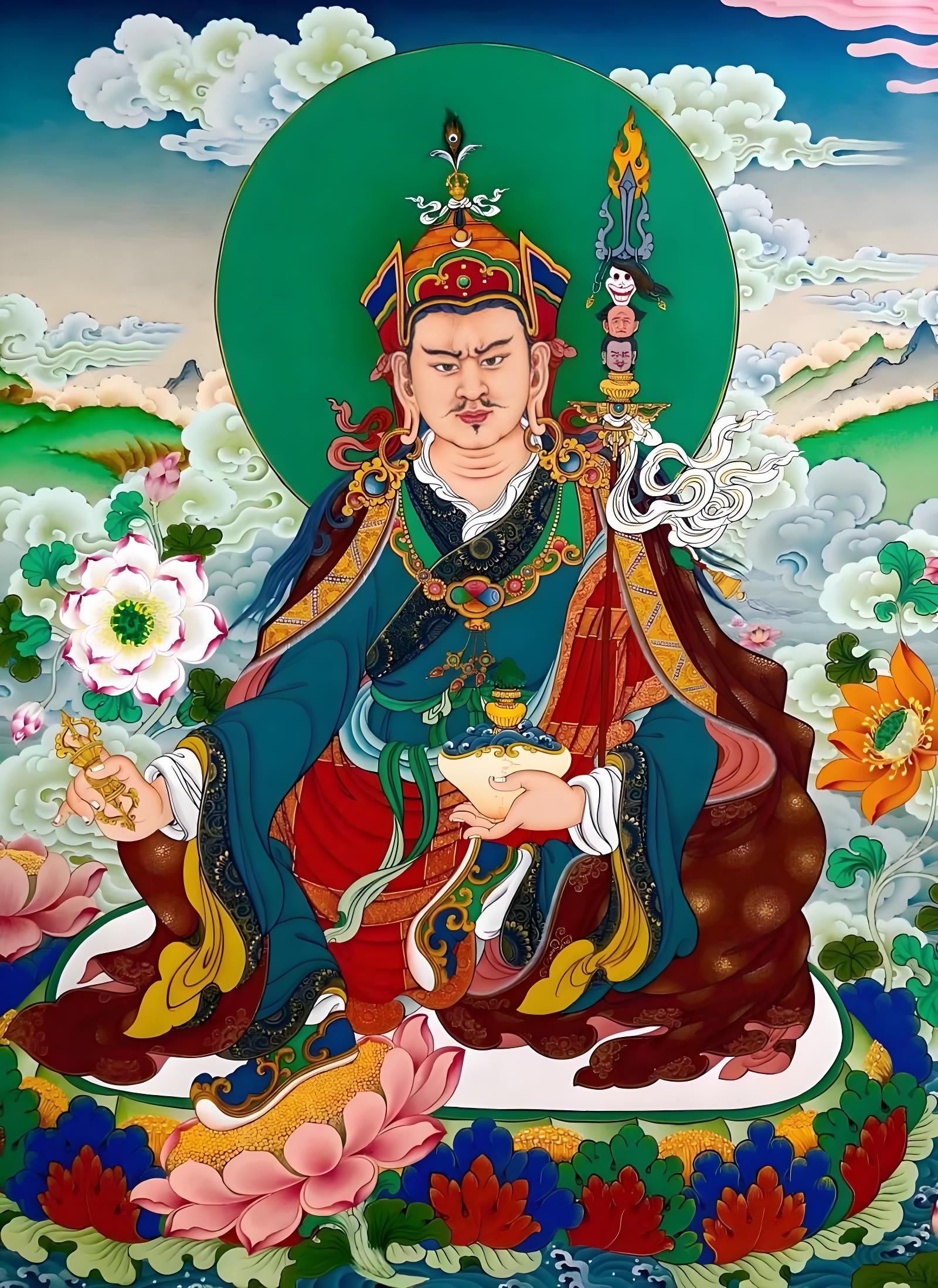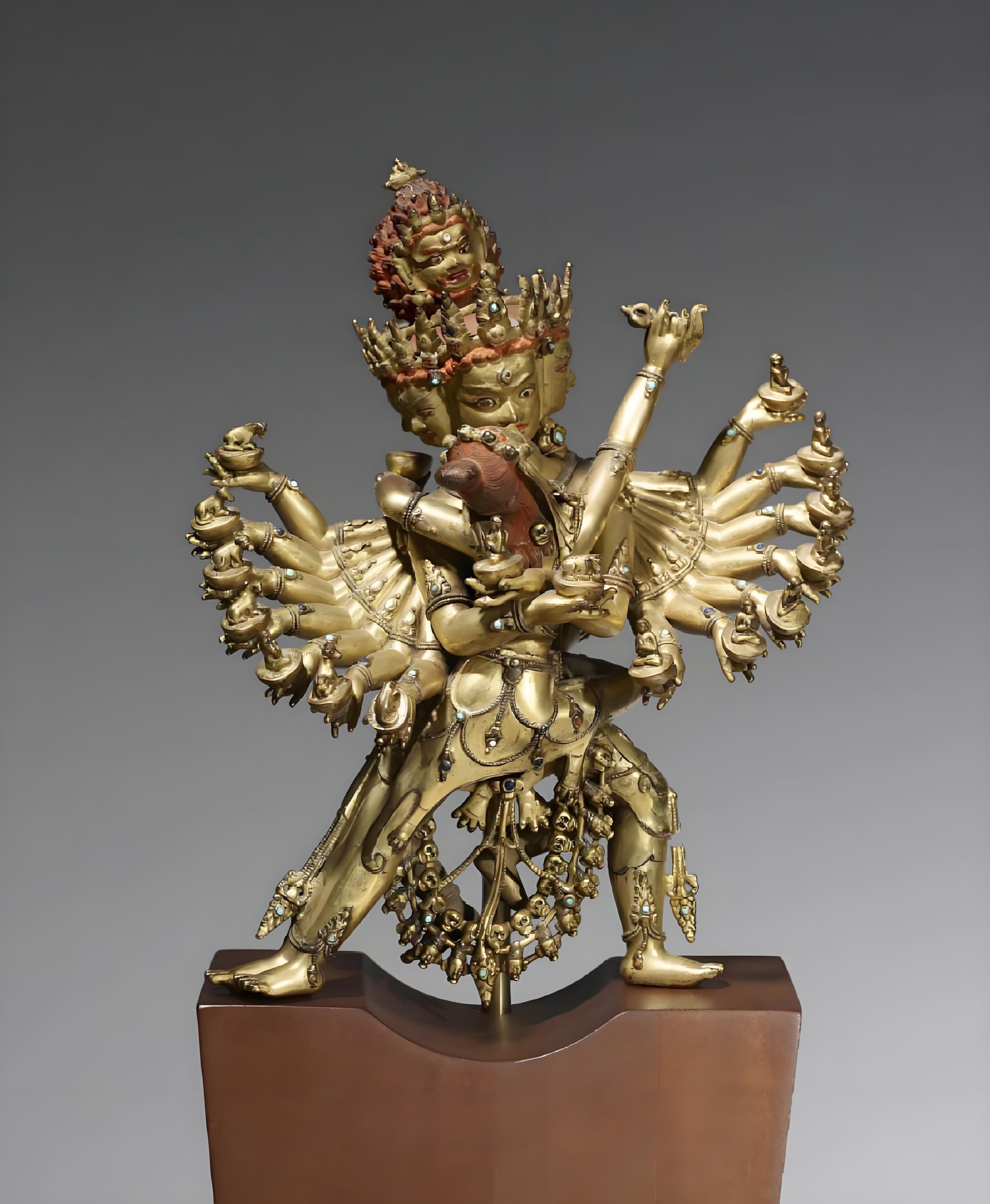Tibetan Buddhism is a form of Mahayana Buddhism that has developed in the Tibetan cultural context, with the Tibetan people as the main followers and the Tibetan language as the primary medium for teaching and study. It has emerged in a unique geographical and historical environment, characterized by strong Tibetan cultural features.
Tibetan Buddhism has a history of over 1,400 years, having been introduced around the early 7th century. Throughout its development, it has gone through four main phases: the initial spread, revitalization, peak, and global expansion.
From the early 7th century, when King Songtsen Gampo initiated the translation of Buddhist scriptures and established Buddhist laws, to the mid-9th century when King Langdarma attempted to suppress Buddhism, the early phase of Tibetan Buddhism’s transmission unfolded.
The revitalization phase spanned from the late 10th century, marked by the great translator Rinchen Zangpo and the Indian Buddhist master Atisha’s introduction of teachings into Tibet, until the 14th century when the Gelug school emerged.
During this period, various Tibetan Buddhist schools, such as the Kadam, Kagyu, Sakya, Nyingma, Kagyud, and Jonang, came into existence, fostering a thriving academic environment where numerous doctrines were debated. From the mid-14th century, when Je Tsongkhapa established the Gelug school, until the mid-20th century, Tibetan Buddhism reached its peak.

During this period, thousands of monastic institutions, including the major three monasteries of Lhasa, were established across Tibet, Mongolia, and the provinces of Gansu, Qinghai, and Sichuan.
The academic achievements in Buddhist teachings and practices reached unprecedented levels, producing many great scholars and influential figures. In the mid-20th century, Tibetan Buddhism encountered a unique historical opportunity to spread beyond Tibet, reaching the West.
With its philosophy of benefiting all beings, its deep teachings, special practices, and rich cultural heritage, Tibetan Buddhism has attracted widespread admiration in the materially wealthy yet spiritually impoverished Western world. In the past half-century, Tibetan Buddhism has flourished in Western Europe, North America, and other Western countries.
As a result, Tibetan Buddhism has grown rapidly among people in Hong Kong, Taiwan, and mainland China, leading to an increasing global following. While Tibetan Buddhism originated in the Tibetan region of China, it is not exclusively Tibetan. It has evolved from a multi-ethnic faith in China to a global religion.

Tibetan Buddhism vs. Chinese Buddhism
- Common Features
Both Tibetan Buddhism and Chinese Buddhism share common features, as they are both forms of Buddhism. These include the acceptance of the Four Seals of Dharma, refuge in the Three Jewels, the observance of monastic vows by the four groups of disciples, the cultivation of compassion, the rejection of evil and promotion of good, and the pursuit of liberation from suffering and its causes. - Mahayana Features
Both Tibetan and Chinese Buddhism belong to Mahayana Buddhism and share the characteristics of the Mahayana tradition, such as the cultivation of bodhicitta for the benefit of all beings, the practice of the liberation vows and bodhisattva vows, the six perfections to accumulate merit and wisdom, and the pursuit of Buddhahood by developing both the form and wisdom bodies. Both traditions aim to transcend the dualistic notions of the Hinayana path.
Key Differences in Tibetan Buddhism and Chinese Buddhism
- The Union of Exoteric and Esoteric Practices in Tibetan Buddhism
Tibetan Buddhism integrates both the exoteric path (the Bodhisattva path) and the esoteric path (the Vajrayana path). Chinese Buddhism, on the other hand, primarily follows the exoteric path. Although Tang Dynasty translations included some esoteric texts, these teachings have largely disappeared, and the esoteric practices are not central to Chinese Buddhist schools. While certain Chinese schools, like Pure Land, may incorporate aspects of esotericism, their practices are fundamentally different. Tibetan Buddhism uniquely incorporates the practice of supreme esoteric teachings, such as those leading to the direct realization of Buddhahood. - The Emphasis on Madhyamaka in Tibetan Buddhism
All Tibetan Buddhist schools adhere to the Madhyamaka view of Nagarjuna, which is central to their teachings, although interpretations of the two truths can vary significantly across schools. In contrast, early Chinese Buddhist schools such as Tiantai, Sanlun, Huayan, and Chan also adhered to Madhyamaka, but later developments in Chinese Buddhism, such as the Pure Land school, have emphasized chanting and devotional practices, moving away from deep philosophical study. - Cultural and Environmental Differences
Due to different historical, cultural, and geographical contexts, Tibetan Buddhism and Chinese Buddhism have developed distinct customs and practices. These differences can be seen in daily rituals, dietary habits, temple architecture, and the psychological makeup of the followers, among other cultural aspects.
Overall, while there are differences between Tibetan and Chinese Buddhism, both share the same core teachings of the Buddha. These differences are mostly related to external practices and doctrinal emphasis.
Tibetan Buddhism vs. Tibetan Esotericism (Tantra)
“Tibetan Tantra” and “Tibetan Buddhism” are distinct concepts. Tibetan Buddhism encompasses both the exoteric path (the Bodhisattva path) and the esoteric path (Vajrayana). The exoteric path is based on the “Tripitaka” texts, focusing on the cultivation of morality, concentration, and wisdom, leading to the achievement of the four bodies of the Buddha. The esoteric path uses the “Four Tantras” and focuses on the practice of yoga, leading to the attainment of the dual-conjoined Vajra Body. While Tibetan Buddhism generally emphasizes the integration of exoteric and esoteric practices, different schools place different emphases on them. For example, the Kadampa school focuses on the Bodhisattva path without strong emphasis on esoteric practices, while the Sakya, Kagyu, and Nyingma schools emphasize tantra. The Gelug school is unique in its integrated approach to both exoteric and esoteric teachings. Therefore, referring to Tibetan Buddhism as “Tibetan Tantra” is not accurate.
“The Red Sect emphasizes practice, while the Yellow Sect emphasizes study.” Is this true?
The statement “The Red Sect emphasizes practice, while the Yellow Sect emphasizes study” implies that the Red Sect does not value doctrinal study, while the Yellow Sect does not emphasize practice. This is not an accurate characterization. Practice is always guided by deep understanding of the theory, and any high-level practice must be informed by profound theoretical knowledge. Likewise, any sect that emphasizes doctrinal study must also understand the importance of integrating practice. Correct practice cannot be separated from correct theory, and advanced theoretical knowledge naturally leads to advanced practice. In reality, the true great masters of the Nyingma school are both profound in their understanding of the teachings and highly accomplished in their practices. Similarly, the Gelug school excels in both doctrinal study and the practice of tantra.
Differences Between Tibetan Buddhist Schools
- Varied Texts and Practices
Each Tibetan Buddhist school emphasizes different texts, practices, and teachings, resulting in unique focuses in their study and practice. - Differences in Philosophical Views
Though all Tibetan Buddhist schools agree on the core teachings, such as refuge in the Three Jewels, precepts, and ethics, they differ in their philosophical interpretations, particularly in understanding the nature of emptiness and existence. These differences arise from both objective factors (the abstract nature of the teachings) and subjective factors (individual understanding and intellectual capacity). As a result, different schools have developed varying interpretations of Buddhist doctrine, leading to intense debates over the years.


